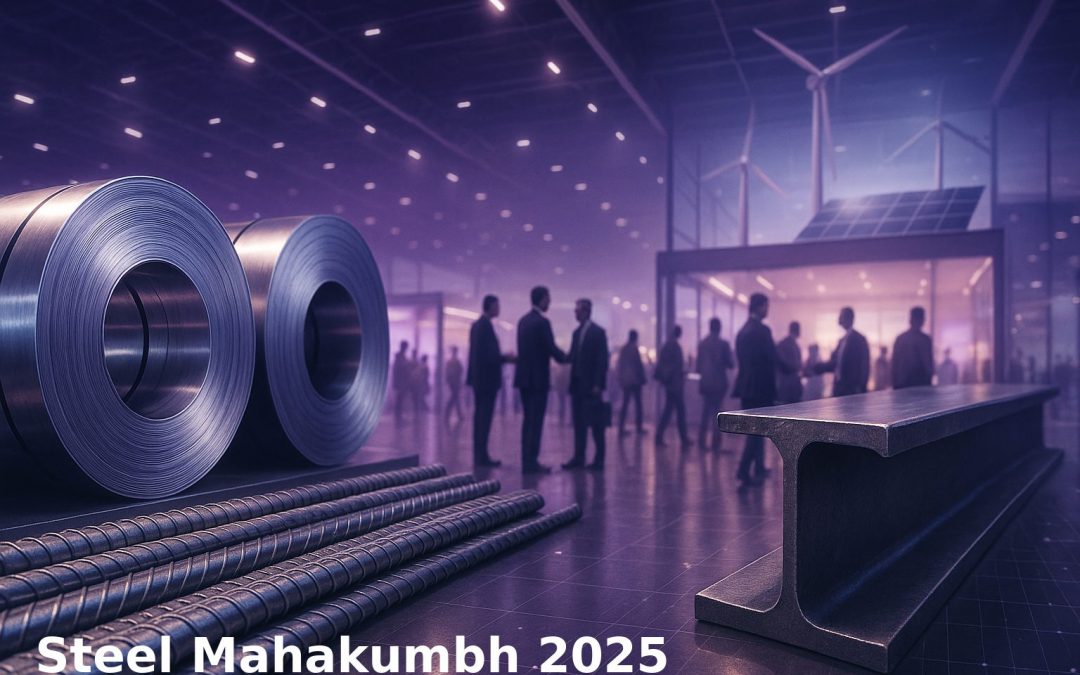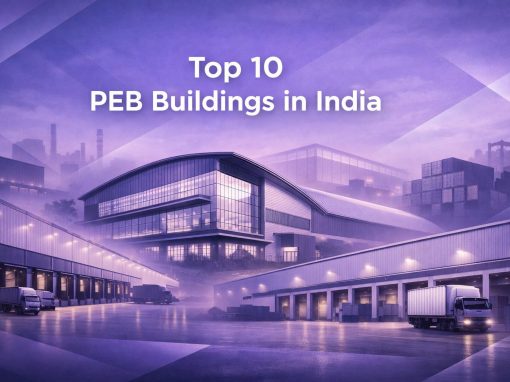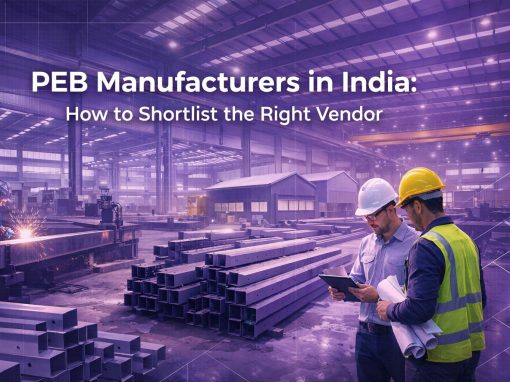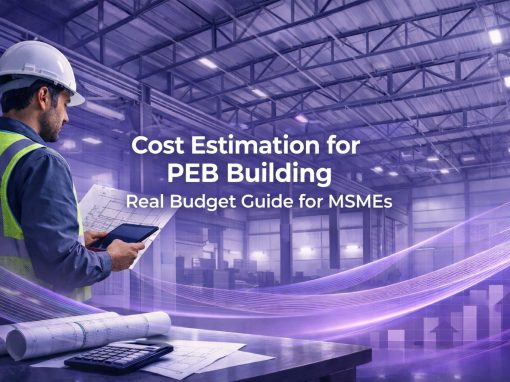Table of Contents
Introduction
When a major steel event ends, MSMEs are often left wondering what actually changed and whether it matters for their daily procurement. Steel Mahakumbh 2025, recently concluded in Mumbai, was one such gathering. It brought together policymakers, mills, service centres, and technology providers under one roof, drawing attention to green steel, new investments, and practical industry linkages.
For most small and mid-sized buyers, the relevance is not in the size of the exhibition stands or the high-level speeches. It is in the outcomes, the MoUs signed, the policy signals sent, and the contacts that can now influence supply, credit, and compliance.
This article explains what Steel Mahakumbh 2025 was, the key announcements, and the takeaways MSMEs can apply immediately. It also clears up a common confusion with SAIL’s role in the Prayagraj religious Mahakumbh, a different event altogether.
What was Steel Mahakumbh 2025
Steel Mahakumbh 2025 was the industry label for AIIFA Steelex 2025, hosted on 19-20 September 2025 at the Bombay Exhibition Centre, Goregaon, Mumbai. The event combined the 37th National Conference on Sustainable Steel with a large-scale exhibition.
It was organised by the AIIFA Sustainable Steel Manufacturers Association, along with the Steel Manufacturers Association of Maharashtra (SMAM), and supported by the Ministry of Steel and the United Nations Development Programme (UNDP).
The conference was inaugurated by Union Minister Pralhad Joshi and Maharashtra Chief Minister Devendra Fadnavis. Their presence underlined both national and state-level commitment to making sustainable steel a priority. Apart from it, policy sessions were framed green steel as a “national imperative,” aligning India’s sector with global standards.
Why “Mahakumbh”?
The “Mahakumbh” label was chosen to reflect the event’s scale and diversity. AIIFA (the All India Induction Furnaces Association) represents over 1,800 stakeholders from induction furnaces, rolling mills, casting units, fabricators, and allied industries.
Relevance for businesses
For smaller buyers, the importance went beyond stalls and speeches. The event created a rare chance to:
- Compare multiple mills and vendors in one place
- Collect mill test certificates (MTCs) and verify IS 1786 compliance
- Discuss delivery windows and credit terms directly with suppliers
Steel Mahakumbh 2025 thus functioned as both a marketplace and a policy forum, helping MSMEs bridge day-to-day procurement with long-term shifts like green steel and hydrogen-based production.
Key takeaways at a glance
The Mumbai edition of Steel Mahakumbh 2025 was not short on announcements. On the inaugural day, the Maharashtra government confirmed investment intents worth nearly ₹80,962 crore. Another set of MoUs, pegged at ₹25,560 crore, was signed in the presence of Union Minister Pralhad Joshi and Chief Minister Devendra Fadnavis. Together, they projected over 22,000 jobs and a plan to position Vidarbha as a steel hub. For most MSMEs, these numbers are less about immediate supply and more about knowing where fresh capacity may enter the market.
Just as critical was the policy framing. Minister Joshi described the shift to green steel as a “national imperative,” tying it directly to the National Green Hydrogen Mission. He pointed to pilot projects worth ₹347 crore already sanctioned, and hubs being planned at Kandla, Paradip and Tuticorin. The launch of a Green Certificate gave practical form to this push, rewarding manufacturers that are actively decarbonising operations. For small and mid-sized buyers, this was a reminder that tenders and audits will increasingly ask for documentary proof of sustainable sourcing.
The conference also introduced the AIIFA Steelex Souvenir, capturing technical papers and case studies on cleaner steelmaking. Beyond the symbolism, discussions highlighted the coming reality of global trade measures such as the EU’s Carbon Border Adjustment Mechanism (CBAM). Export-focused MSMEs will need to watch this closely, since it will affect compliance costs and supplier choices.
Steel Mahakumbh 2025 therefore left two clear signals: investment is flowing into capacity, and sustainability will decide which suppliers stay competitive.
Two “Mahakumbhs,” SAIL in Prayagraj vs the Mumbai steel expo
The name “Mahakumbh” created some confusion this year. While Mumbai hosted Steel Mahakumbh 2025 in September, the religious Mahakumbh Mela 2025 is scheduled at Prayagraj early next year. Both carried steel headlines, but in very different contexts.
SAIL at the Prayagraj Mahakumbh
SAIL, the Steel Authority of India, supplied close to 45,000 tonnes of steel for the Mahakumbh Mela 2025 in Prayagraj. The steel is being used in bridges, ghats and large temporary structures that will support millions of pilgrims. This is consistent with SAIL’s role as a public-sector giant that steps in for major civic and national projects. The update was carried on SAIL’s official site and other government channels, tying it directly to preparations for the event.
Steel Mahakumbh in Mumbai
By contrast, the Steel Mahakumbh 2025 in Mumbai was purely an industry gathering. Officially branded as AIIFA Steelex 2025, it borrowed the “Mahakumbh” tag to signal scale. The event centred on investment announcements, green steel discussions and exhibitor showcases. MoUs worth thousands of crores were announced, and exhibitors ranged from long and flat product suppliers to testing agencies and logistics players.
For MSMEs, this was not a cultural festival but a working floor where procurement conversations, compliance checks and new supplier connections could be made in real time.
Understanding the difference is important for searchers and buyers alike. SAIL’s involvement in Prayagraj demonstrates the scale at which steel underpins national projects, but it does not connect to supply or vendor opportunities. The Mumbai edition, however, did. That distinction prevents wasted time and ensures MSMEs focus on the forums that actually affect procurement cycles.
Why the event matters for MSMEs
Steel Mahakumbh 2025 was not just about policy speeches or MoU figures. For smaller firms, the real value was in what could be seen, asked, and verified on the ground.
Access to decision-makers
Instead of working through dealer layers, MSMEs could walk up to mills, processors, or testing agencies. Holding a sample bar or examining a compliance sheet across the counter gave a level of access that routine supply chains rarely allow.
A truer picture of price
With exhibitors quoting side by side, the floor worked like a live price board. Buyers quickly sensed where freight inflated the landed cost and how credit promises reshaped the final number. That transparency is difficult to capture through phone calls or scattered quotations.
Practical networking
The quieter gains came from conversations scribbled into diaries: dispatch timelines, after-sales contacts, or credit terms noted quickly. These small interactions are what often convert into smoother orders and fewer disputes later.
For many buyers, these everyday advantages mattered more than the larger investment announcements from the podium.
Green steel takeaways for procurement
Steel Mahakumbh 2025 was framed as much around sustainability as it was around business. Union Minister Pralhad Joshi called the transition to green steel a national imperative, linking it to the National Green Hydrogen Mission and global trade shifts. For MSMEs, the speeches were less about vision and more about the practical checks that buyers must now keep in mind.
Policy signals from the top
- Pilot projects worth ₹347 crore are already sanctioned to blend hydrogen into steelmaking.
- Green Hydrogen hubs are planned at Kandla, Paradip and Tuticorin.
- Maharashtra announced its own push with a hydrogen valley innovation cluster.
- A Green Certificate was launched to recognise manufacturers actively decarbonising.
These developments mean procurement conversations will increasingly reference renewable inputs, energy efficiency, and carbon benchmarks.
Why it matters now
Global measures like the EU’s Carbon Border Adjustment Mechanism (CBAM) will impact exporters, but the ripple will reach domestic buyers too. MSMEs supplying to larger contractors will face document requests on carbon footprint and process traceability. Securing paperwork early reduces rejection risks later.
Bottom line for MSME buyers
Steel Mahakumbh 2025 underlined two messages: investment is flowing into new capacity, and sustainability will shape the future of procurement. For MSMEs, the event mattered less for the scale of the announcements and more for the chance to verify documents, compare suppliers, and start useful conversations. Those who treated the floor as a working marketplace gained insights that will help in tenders and negotiations long after the event closed. The takeaway is clear: in steel, preparedness and documentation matter as much as price.
Looking to procure steel?
Tata nexarc helps manufacturers, builders and MSMEs source certified steel products, compare prices, and choose the right grade as per IS codes—with complete traceability and procurement confidence.
Charul is a content marketing professional and seasoned content writer who loves writing on various topics with 3 years of experience. At Tata nexarc, it has been 2 years since she is helping business to understand jargon better and deeper to make strategical decisions. While not writing, she loves listing pop music.





